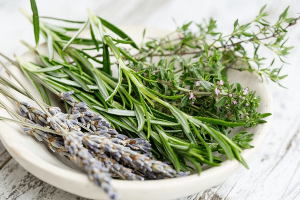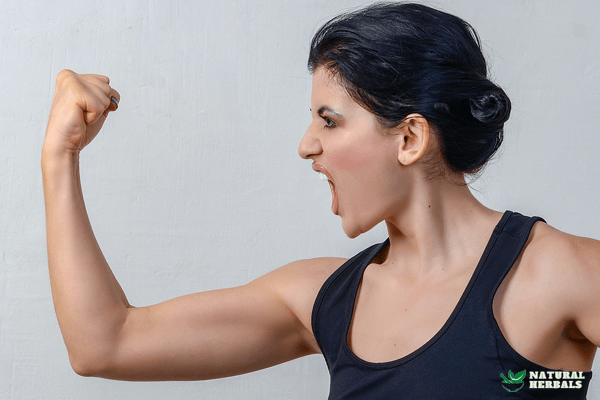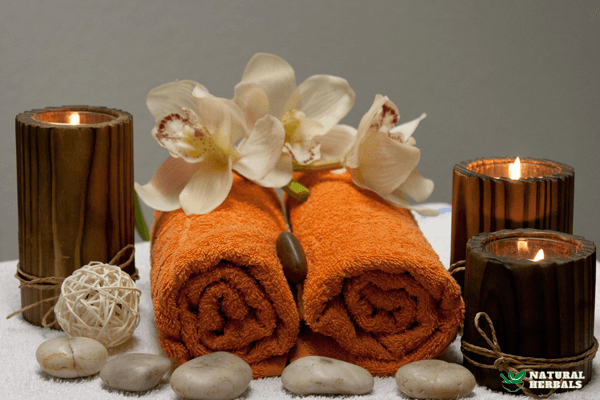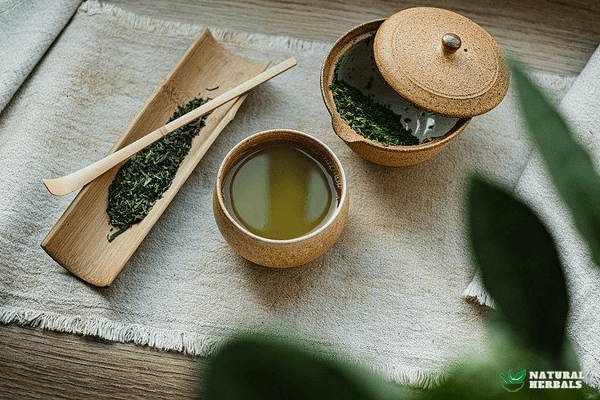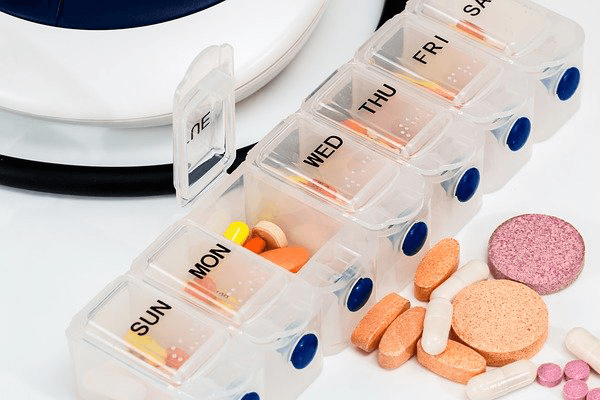
Hypertension can develop at any age, although it most often affects the elderly. It remains asymptomatic for a long time, and noticeable symptoms sometimes appear only when the heart or kidneys are damaged. Hypertension should be treated as early as possible and the therapy can be supported with herbs.
People whose average blood pressure, measured several times, is between 140/90 and 160/95 mm Hg has what is called borderline arterial hypertension. Patients with such high blood pressure should definitely see a doctor. Effective hypertension treatment prevents stroke, heart attack, heart, and kidney failure.
If left untreated, it can progress to a malignant stage and cause rapidly progressive damage to various internal organs and impaired vision, balance, or hearing.
Hypertension and Atherosclerosis
The effects of hypertension on the development of atherosclerosis are complex. Elevated blood pressure increases blood pressure on the arterial wall and increases the penetration of LDL cholesterol (“bad cholesterol”) into the inner membrane of the vessels and damages the endothelium.
Although atherosclerosis can develop despite the absence of hypertension, there is no shadow of a doubt that the process is exacerbated by elevated blood pressure. Lowering blood pressure delays the atherosclerotic process.
Left Ventricular Hypertrophy
Long-term hypertension inevitably leads to left ventricular hypertrophy, increasing the risk of ischemic heart disease, arrhythmia and heart failure, stroke. Also, obesity, heart valve defects, diabetes mellitus, thyroid or pituitary disorders, as well as excessive intake of table salt, alcohol abuse and excessive physical activity (hard work, competitive sports) can lead to left ventricular hypertrophy. This condition is best detected and evaluated with a safe and easy-to-repeat echocardiogram (heart echo).
Angina Pectoris
Angina pectoris, coronary artery disease, and cardiac hypoxia are conditions caused by the inadequate blood supply to the heart muscle. The typical form of angina pectoris is characterized by burning and squeezing pains in the sternal area, radiating to the left arm. The pain occurs after exertion or changes in environmental temperature.
They pass spontaneously or after the use of a vasodilator drug such as nitroglycerin. Occasionally, cardiac hypoxia takes the form of left shoulder, jaw, jaw, or stomach pain. Coronary pain can perfectly mimic the symptoms of an acidic stomach.
Myocardial Infarction
A heart attack is the necrosis of a piece of heart muscle caused by ischemia. The main cause is the closure of a coronary artery by a thrombus. Typical symptoms of a heart attack include chest pain, usually sternal, shortness of breath, sweating, feeling anxious, and nausea.
The pain may radiate to the jaw, back, shoulders or epigastrium. An important criterion suggesting a myocardial infarction origin of the pain is its duration – myocardial infarction pain usually lasts no less than 20 minutes, often several hours.
It is extremely important not to delay in calling an ambulance when coronary pain does not go away after 2-3 nitroglycerin tablets. Pain lasting longer than 20 minutes raises the suspicion that it is a symptom of a heart attack and there is really no point in waiting any longer in the hope that it will pass on its own.
The patient's life and future health depend on getting to the hospital quickly, as only rapid treatment intervention offers a chance to limit the infarct zone.
Hypertension in the Elderly
Treatment of hypertension in the elderly requires certain rigor and limitations. A hypotensive drug or group of drugs is selected individually for many reasons. Renal function is often impaired in the elderly. Senile changes in the liver cause a decrease in the activity of enzymes involved in drug elimination.
Hypotensive drugs “flush” magnesium and potassium from the body faster and more intensively. They also more rapidly and intensively increase uric acid, glucose, and cholesterol in the blood of the elderly. In addition, they more easily penetrate the brain of the elderly, which puts them at risk for complications such as depression.
Today, doctors have many modern drugs to choose from to treat high blood pressure. These preparations are increasingly effective and convenient to use (some can be taken only once a day).
Of course, some medications may cause temporary side effects, such as redness of the skin or coughing. If this is the case, your doctor can always switch you to another medicine that is better tolerated.
Abrupt discontinuation of these medications may result in increased blood pressure, worsening of coronary artery disease, etc. None of the medications you are taking should be discontinued without consulting your doctor.
Along with pharmacological treatment, it is recommended to limit the intake of table salt and sugar, systematically perform moderate exercise and consume more magnesium, potassium and unsaturated fatty acids.
Natural Preparations for Lowering Blood Pressure
The primary ingredient in herbal mixtures that lower blood pressure is the herb Herba visci mistletoe. Oral preparations of mistletoe are often used as hypotensive drugs.
The blood pressure-lowering effect is found only after prolonged administration of mistletoe extracts (more than 2 weeks). The hypotensive effect of mistletoe is attributed to the presence of -aminobutyric acid.
The most commonly used herbal treatment for BP is mistletoe juice and intract (Succus, Intractum Visci).
Hawthorn
Hawthorn inflorescences, Inflorescentia Crataegi, and because of the similarity in chemical composition, hawthorn fruits Fructus Crataegi are used as mild cardiac drugs (cardiaca). They do not contain cardiac glycosides and are therefore non-toxic. These raw materials and their preparations have a vasodilatory effect on the coronary arteries, increasing blood flow.
The active ingredients here are flavonoids, mainly hyperoside, as well as vitexin and its derivatives, whose resorption from the gastrointestinal tract is poor. Similar effects are shown by oligomeric dehydrocatechins, among them procyanidin. Extracts from leaves and bark have antiarrhythmic effects.
Some amines have a positive inotropic effect on the myocardium and are active components of the raw material. The importance of oligomeric procyanidins as active components of both raw materials is emphasized. Procyanidins are resorbed from the gastrointestinal tract.
They increase the membrane permeability of Ca2+ ions. Taken together, the cardiac efficacy of both preparations is a factor of the summation of effects caused by different groups of components, as well as their variable content, making it necessary to standardize the preparations on the content of procyanidins or flavonoids.
Hawthorn preparations, mainly Tinctura and Intractum Crataegi are used in heart diseases in old age, especially in atherosclerosis, angina pectoris, and hypertension. The raw material is included in numerous galenical preparations, factory specifications, as well as herbal mixtures.
Rosemary
Rosemary leaves Rosmarini folium as a cardiac raw material. The main components of rosemary, apart from the oil, are flavonoid compounds (including luteolin and apigenin glycosides).
Rosemary leaf contains 1-2.5% essential oil, whose main components are 1,8-cyneol, (+)-borneol and borneol acetate, camphor, camphene, – and -pinenes.
Rosemary contains tannins, triterpenes, and polyphenolic acids. Rosemary is administered in the form of juice, tea, or liquid extract with extracts of hawthorn flowers. It is recommended in circulatory disorders, coronary insufficiency, and in maintenance therapy of the so-called senile heart.
Rutae herba
Rutae herba, as well as buckwheat herb (Fagopyri herba), Violae tricoloris herba, elderflower (Sambuci flos), hawthorn inflorescence (Crataegi inflorescentia) contain valuable flavonoid – rutin (rutoside). Rutin seals capillaries, reduces their fragility, inactivates some tissue enzymes (e.g. hyaluronidase), acts anti-inflammatory, inhibits ascorbic oxidase (prevents oxidation of vitamin C), has oxidoreductive properties.
Very complex chemical composition of the raw material:
- 1 quinoline, furoquinoline, and acridine alkaloids
- 2 essential oil;
- 3 furanocoumarins – affects various types of possible spasmolytic, sedative effects.
Although rue herb is used in many countries as a raw material of multidirectional pharmacological activity, its use in Europe is limited by mutagenic effects of coumarin compounds, their phototoxic and abortifacient effects.
Rue extract is included in the cholepoietic preparation Cholesol. Rusci rhizoma et radix contains saponins (ruscogenin), oil, potassium salts and resins. Ruskogenin has a strengthening effect on the walls of venous vessels, improves venous flow, reduces stasis and swelling, decreases inflammatory reaction.
Ruta Herbal Blend to Lower Blood Pressure
- Ruta herb
- Mistletoe herb
- Rosemary leaf
- Hawthorn inflorescence
- Strawberry leaf 50 grams each
- Horsetail herb
- Couch grass rhizome
- Melissa leaf
- Dandelion root
- Cardinalis herb
- Rowan fruit 25 grams each
Preparation and application:
Mix the ingredients of the mixture thoroughly in the proportions given. In an enamel pot, pour 3 heaping tablespoons of 3.5 cups of room temperature water. Over a low flame, bring to a boil for about 3-4 minutes.
Allow to stand for 5 minutes. Stir again and strain into a thermos. Drink a glass of the decoction 3 times a day half an hour before eating. Herbal mixture for hypertension, high cholesterol, improving venous flow
Hawthorn Herbal Blend to Lower Blood Pressure
- Hawthorn inflorescence and fruit
- Rush rhizome and root 25 grams each
- Rowan fruit
- Mucilage
- Yarrow herb
- Bark of buckthorn
- Bird knotweed 10 grams each
Decoction of a tablespoon of herbs per glass of water. Drink 2-3 glasses of the decoction daily.
A herbal blend that benefits coronary blood flow
- Arnica flower
- Rhizome of calamus
- Hawthorn inflorescence and fruit 15 grams each
- Melissa leaf
- Cardinalis herb
- Yarrow herb
- Valerian root
- Horsetail herb
- Mistletoe herb 25 grams each
OTC preparations that lower blood pressure
Pharmacies now have a wide range of non-prescription cardiovascular drugs. They are composed of various plant materials with multidirectional effects:
Hawthorn inflorescences described in mixtures, can lower arterial pressure and dilate coronary vessels. This action is supported by horsetail herb, couch grass rhizome showing mild diuretic effect. omega-3 fatty acids influence lowering of triglycerides level, improvement of “good” and “bad” cholesterol ratio in blood, and mild lowering of blood pressure.
Omega-3s also regulate the bioelectrical function of the heart muscle, which has a stabilizing effect on its activity. Read more
Folic acid, in combination with vitamins B6 and B12, is involved in the breakdown of homocysteine in the body, which lowers its concentration in the blood. High levels of homocysteine are considered to be one of the most important adverse factors for the heart.
Vitamin E acts as an antioxidant by reducing the effects of harmful “bad” cholesterol. At the same time, it prevents the oxidation of “good” cholesterol.
L – Carnitine. Administration of carnitine-containing preparations in cardiovascular disease increases the efficiency of the fatty acid metabolism process, decreases the concentration of triglycerides and free fatty acids in the blood and tissues, and increases the concentration of HDL (“good”) cholesterol in the blood. Selected over-the-counter preparations containing L-carnitine: ALC acetyl L-carnitine capsules, L-Carnitine tablets, OLIMP L-Carnitine lozenges.
Garlic
Garlic and its preparations have long known therapeutic properties in cardiovascular disease. The complex mechanism of anti-atherosclerotic action of garlic consists in inhibition of HMG-CoA reductase (allicin, ajoene, diallyl disulfide) and inhibition of fatty acid synthetase, reduction of lipid concentration in arterial walls. The antioxidant activity of garlic is also confirmed.
The use of garlic protects against diet-induced hypercholesterolemia, reduces atherosclerotic lesions, has a protective effect on the vascular endothelium. The levels of total cholesterol, LDL-cholesterol, triglycerides were found to decrease and HDL-cholesterol was shown to increase, i.e. a positive effect on lipid metabolism.
Currently available standardized preparations containing garlic powder are generally well tolerated. This is particularly important in the case of lipid metabolism disorders, because the period of therapy lasts several months (usually the expected therapeutic effect is obtained after 6 months of use in the recommended doses). Garlic has also been shown to inhibit platelet aggregation, reduce blood pressure, and lower blood glucose levels.

I am an official member of International Association of Therapists and research natural healing methods and herbs. The posts are my findings.


